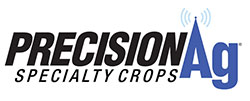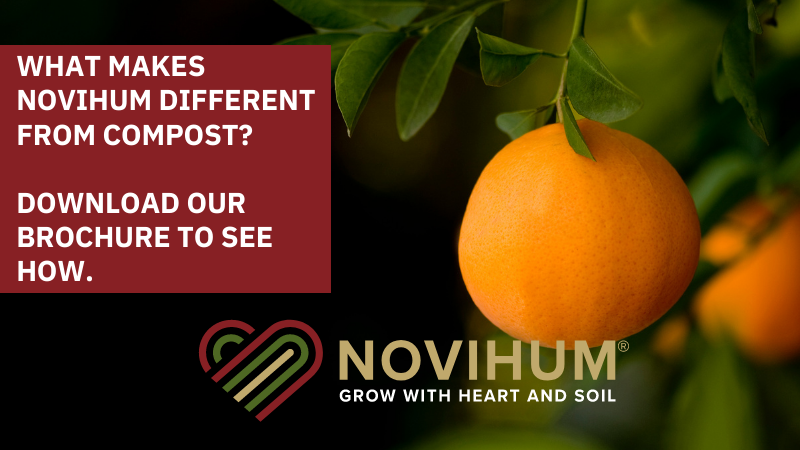PrecisionAg and Collaboration: 5 Questions with Scott Speck
Throughout the month of March, we’re looking into fresh ideas on how growers can get more out of precision ag through collaboration. To that end, we link up with Farmers Edge’s Scott Speck, the regional digital ag lead for the Western Plains for the Winnipeg, MB-based ag tech platform provider.
 For those not familiar, Farmers Edge is a full suite precision ag platform for growers that leverages hyper local weather, soil, historic production, and aerial data (among many other layers) to help farmers make better decisions in all aspects of their operations. The company recently announced several updates to its legacy FMIS platform, FarmCommand, at row crop agriculture’s annual blowout Commodity Classic 2020 in San Antonio, TX.
For those not familiar, Farmers Edge is a full suite precision ag platform for growers that leverages hyper local weather, soil, historic production, and aerial data (among many other layers) to help farmers make better decisions in all aspects of their operations. The company recently announced several updates to its legacy FMIS platform, FarmCommand, at row crop agriculture’s annual blowout Commodity Classic 2020 in San Antonio, TX.
Considering the region he serves, Speck has considerable insights into adapting ag tech solutions for specialty crop growers.
American Vegetable Grower (AVG): Care to share any tips or methods that a grower can implement to best position themselves to work with the best and brightest in ag tech?

Scott Speck
Scott Speck (SS): Specialty growers face many of the same, but also many very different challenges than traditional row crop farmers that many of the ag tech companies have been working with for years.
When starting out implementing ag tech and precision ag practices, we’ve found that to start with a discussion about the goals, frustrations, and opportunities for the individual farm is key to making sure that the products and services we offer fit into that farm operation. A good practice for growers to implement to position themselves to ride the coming wave of digital agriculture is to get the team together on the farm and discuss the road map. Where are we now, and where do we want to be? Are we having issues with labor, tracking equipment, or finding out problems in the blocks or fields quicker?
Once you know where you want to go, there are digital solutions out there to help, and the next step is having organizations show what they have and do that fits your farm operation. Having that road map puts you as the farmer in control, while giving you a clear path of where you want to go to match up with the best and brightest in ag tech, instead of getting caught up or overwhelmed with the technology.
AVG: Are there traits or characteristics you look for in a farmer that signals they will be willing and open to taking the ag tech leap?
SS: When we are working with farmers, we also want to understand where they are at in their digital journey, and how we can help enhance what they are currently doing in ag tech or help take that leap into the adoption process. We tend to look at where someone is currently in their journey, what solutions they need for the goals they have, and then focus on how to support.
For us, we offer dozens of different tools that some growers use all of, and some use some of – depending on where they are in that journey. If a farm is having unanswered questions, or seeing efficiencies drop because of information or processes they are unaware of, that is a great signal to take the ag tech leap.
It doesn’t have to just be a box of goods that comes in the mail that a farm then has to figure out with ag tech anymore, support has become a key pillar to success for ag tech companies, and if someone is looking to gain more insight, efficiency, or time right off the start, they are a great candidate.
As organizations in ag tech, we know it is important to walk before we run or we might see injuries, and that is a key part of picking providers and organizations to work with, we want to be there for the long term as a partner on the farm and help make that leap easier, and that definitely comes with knowing what the goals are and how an organization fits into that farm.
AVG: You’ve worked with quite a few specialty growers in your role at Farmers Edge. Are there growers that standout as the almost “perfect candidate” to work with on digital farming/ag tech, and why do you think that grower was such an ideal fit?
SS: The perfect candidate to work with on digital farming and ag tech that I see is someone who is willing to learn and wants to find ways to better their farm. It doesn’t matter where you currently are in your digital journey, your farm history, your age, etc. – if you see holes or opportunities to enhance your day to day tasks and decision making based on missing information, then precision ag is so wide that there are fits that can be very easy to start with.
I think of digital agriculture like a gym membership, if you buy it and never use it, you will probably see little value in that subscription, hardware, software, whatever. But if you take the time to invest in it to meet the goals you have for the farm, which may range from sustainability, to profitability, to labor/time maximization, and use the systems and processes, you will absolutely see results.
Growers that are willing to learn that have goals in mind on where they want to go can take the leap much easier, because they see the value and fit for technology and precision ag to make a difference on the farm. If you are just doing it because it is a trend or a friend is selling it, it will be harder for you to find the value if you aren’t bought in. That is critical for long term adoption and usage for precision ag and digital agriculture today.
AVG: We know many ag tech solutions are targeted at initial release for the large acreage row crop market. Specialty growers tend to differ in that many are working a more diverse crop mix and looking for multiple turns, and some even perpetually plant and harvest crops year-round. How does this difference in growing style alter your strategy when coming up with technologies and systems for those specialty growers?
SS: Row crop can sometimes be more predictable, but what I see with specialty crops is that a decision we make by using digital tools can make a long-lasting impact. If I see something using imagery in a wheat crop that takes up a few acres of my field with mismatched fertility, it is something I can fix now and then next year I get a whole new chance at that crop. And, in the grand scheme of hundreds or thousands of acres, it isn’t a huge impact to my farm.
Now, if I see something in an almond crop that takes up a few acres of my block, I need to know right away, as it can impact those trees and that block for years to come. I don’t get another chance next year in the case of some permanent crops, and even when looking at produce at a high value, to catch things fast or to address problems before they can occur ends up making a much higher impact on my bottom line than traditional cash commodity crops.
In traditional row crops, we often have time to stop and analyze and think, but in multiple turns or perpetual harvest and perennial cropping, we need to know things fast and constantly as time can be limited and the impact is much higher on the bottom line.
When we look at the strategy of specialty crops, we still look at the fact that these are plants growing in soil, and many of the tools we come up with do have an easy transition, but can be used in different ways. Weather stations we use for insurance purposes on hailstorms and temperature inversions for pesticide applications in row crops have purpose in specialty for chill portions or frost damage in grapes. Moisture probes for irrigated pivots in the Midwest have a crossover for drip irrigation or wheel lines and flood irrigation. Imagery that shows pest damage in canola based on the growth of the crop also shows canker in trees or irrigation issues in strawberries.
The technologies are nice in crops of all kinds because of that crossover and opportunity to apply to the scenarios a specialty farm will see, but it is key to know those goals or issues that may be present as there may even be ways to apply current technology we haven’t thought about yet!
AVG: Any other thoughts to share? Anything in particular you feel is worth noting around the Farmers Edge FMIS platform FarmCommand, and how it enables you to work collaboratively with the farmer?
SS: I think the biggest opportunity for any growers, but especially growers that are relatively new to technology, is the understanding that there are lots of options available from all corners of the world, and they can be as finite or infinite when it comes to selection.
When you’re looking at getting started into precision ag and the digital side of agronomy, first know what goals you have and second find someone you can partner and work with for the long term and who fits into the framework you already have on the farm. If you have a team of folks working with you already that you like, technology does not and should not have to replace anything currently happening – but should enhance those relationships, tasks, and decisions you have to make each day.
For us with FarmCommand, we are very proud of the fact it can be deployed in all types of crops globally and that we have committed to creating functionality on so many different tools, that is has given us the flexibility to work with farmers of diversity in crops and needs. Due to the fact we have so many tools and solutions, we can custom tailor programs to the farmer so that we can work as partners closely and collaboratively to meet the goals that farm has, even if they are different than another farm down the road. Having that agronomy and farm background inside of our company has given us what we believe is a true advantage in the marketplace to develop solutions for problems that farms have, instead of developing solutions trying to find problems. We are very excited to have those relationships with farmers and help them start or continue and enhance their digital journey, no matter where they are in the process.










